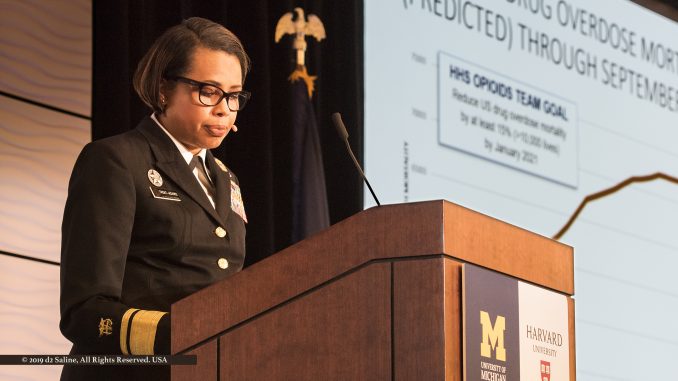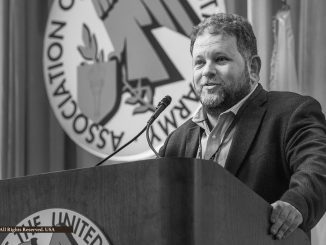
Here are the two most important things to know about the excessive use and abuse of opioids in America today.
First, as Rear Admiral Sylvia Trent-Adams PhD, RN, pointed out in her keynote address before the joint University of Michigan and Harvard University summit in Ann Arbor last week, 62.6% of those who are misusing these substances are doing so for pain management. [1-6]
Second, those medical practitioners who legitimately have been legitimately writing prescriptions for opioids have done so with “little guidance” and overprescribing is a widespread problem that contributes to the opioid epidemic currently claiming 130 American lives every day. [7]
The perhaps surprising implication of this is that the heart of this “crisis” or “epidemic” is neither largely relegated to the nether reaches of society nor distant. For some, this may be cause for enhanced compassion, empathy. And in cases where it is not, it is a growing threat to the every community and business of which the growing problem is a ubiquitous part.
The UofM Department of Psychiatry asserts that addiction “is a chronic, relapsing brain disease characterized by compulsive alcohol or drug seeking and use despite harmful consequences. It is not caused from a lack of moral convictions or willpower ….” Here in the United States, one in seven will develop a substance use disorder. Of those, only ten percent will receive treatment. [8]
In 2016, Michigan had the eighth-largest number of deaths due to drug overdose and the fourteenth-highest overdose death rate in the country. [9]
Only 18% of Michigan counties had access to all recommended treatment options and one-third of counties had no medication-based treatment services for opioid addiction.
Harvard University has noted that first-time prescriptions are “an important gateway to long-term opioid use and misuse,” characterizing recipients as “opioid-naïve.” [10]
A University of Michigan study titled “Understanding Opioid Prescribing After Surgery” published earlier this year found that up to 92% of patients had opioids that had been prescribed to them for common operations left over. The amount of medication dispensed often “far exceeds” pain management need. “Prescription size is the strongest predictor of how much opioid a person will use.”
Two million Americans [currently] abuse or are dependent on prescription opioids. [11]
The Michigan Opioid Prescribing Network (“Michigan OPEN”) was founded in late-2016 “in an effort to develop a preventative approach to the opioid epidemic in the state of Michigan by tailoring postoperative and acute care opioid prescribing.” It has backing from the Michigan Department of Health and Human Services, Blue Cross Blue Shield of Michigan, and UofM. [12-14]
For perspective, this is a sampling from their 2019 list of “Prescribing Recommendations.” [15]
| Appendectomy – Laparoscopic or Open | 10 Oxycodone 5mg tablets |
| Breast Biopsy or Lumpectomy | 5 Oxycodone 5mg tablets |
| Cardiac Surgery via Median Sternotomy | 15 Oxycodone 5mg tablets |
| Cesarean Section | 15 Oxycodone 5mg tablets |
| Colectomy – Laparoscopic or Open | 15 Oxycodone 5mg tablets |
| Dental | Zero Oxycodone 5mg tablets |
| Hernia Repair – Major or Minor | 10 Oxycodone 5mg tablets |
| Prostatectomy | 10 Oxycodone 5mg tablets |
| Cardiac Surgery via Median Sternotomy | 15 Oxycodone 5mg tablets |
| Thyroidectomy | 5 Oxycodone 5mg tablets |
| Total Hip Arthroplasty | 30 Oxycodone 5mg tablets |
| Total Knee Arthroplasty | 50 Oxycodone 5mg tablets |
To position this as a national priority, Rear Admiral Trent-Adams opened her presentation with a photograph of Admiral Brett P Giroir MD, Assistant Secretary of Health at the US Department of Health & Human Services, taken during a recent Oval Office meeting with President Donald Trump on this issue. [16]
“So we have that attention,” she said.
But this problem can only be solved with through the involvements of all sectors, and it has to include the local community. Hospitals. Relatives. The faith-based community. Employers.
References
- “Rear Admiral (RADM) Sylvia Trent-Adams, PhD, RN, FAAN” United States Department of Health & Human Services.
- University of Michigan (home page).
- Harvard University (home page).
- “Opioids: Policy to Practice” (May 10, 2019) University of Michigan.
- “Fighting the opioid epidemic with new knowledge: U-M teams up with Harvard, National Academy of Medicine” Kara Gavin (April 30, 2019) Michigan News, University of Michigan.
- “Pharma-to-doc marketing a vulnerability in opioid fight” Alvin Powell (May 13, 2019) The Harvard Gazette.
- “Understanding Opioid Prescribing After Surgery” Eileen Kostanecki (February 2019) Institute for Healthcare Policy & Innovation, University of Michigan.
- “What is Addiction?” U-M Addiction Center, Department of Psychiatry, University of Michigan.
- “Opioid addiction: Michigan counties struggle to meet the need for treatment” Kristen Kerecman (May 9, 2019) Michigan News, University of Michigan.
- “Dramatic Shift in Opioid Prescribing” Jake Miller (March 13, 2019) Harvard Medical School.
- “Opioid Research at Michigan” Opioid Solutions, University of Michigan.
- The Michigan Opioid Prescribing Network (Michigan OPEN) (home page).
- MDHHS: Michigan Department of Health & Human Services (home page).
- Blue Cross Blue Shield Blue Care Network of Michigan.
- “Prescribing Recommendations: Updated 2019” (2019) Michigan OPEN.
- “Admiral Brett P Giroir MD” United States Department of Health & Human Services.



